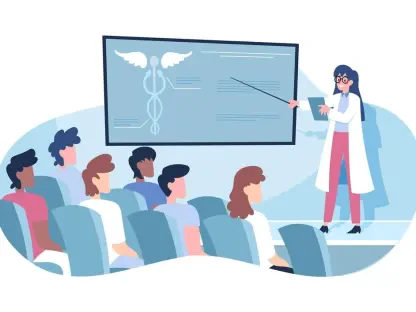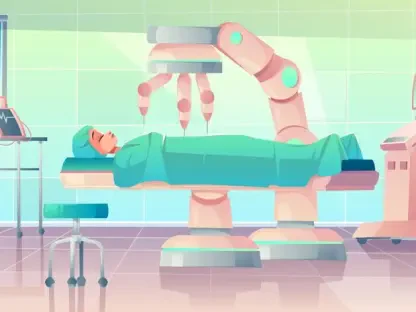Listen to the Article
Technology now underpins every facet of modern healthcare. In a field where outcomes are literally life and death, every technological upgrade promises faster diagnoses, smoother workflows, and more personalized care. From electronic health records to AI-enabled diagnostics, your digital stack is now central to everything. Hospitals, clinics, and healthcare systems are pouring millions into infrastructure in hopes of improving access, efficiency, and—most importantly—patient outcomes.
Yet, in practice, many institutions are discovering a frustrating paradox: more tech doesn’t always mean better care. In fact, when misaligned, fragmented, or overly complex, your health tech stack can do more harm than good. Disconnected systems stall workflows, redundant software overwhelms clinicians, and poor data quality introduces a significant risk of misdiagnoses, leading to suboptimal treatment plans.
Institutions ought to reassess their stacks, and this article is a good starting point. Inside, you will explore why tech overload is quietly undermining care delivery, the consequences of digital disconnect, and the steps you can take to build a future-ready stack that truly supports clinical excellence.
When Tools Don’t Talk
Over the past decade, the average health system has adopted more than 18 digital tools to support clinical and operational workflows. Many of these were deployed in response to urgent needs—telehealth tools during the pandemic, electronic health record add-ons to meet new reporting requirements, or niche apps aimed at improving patient engagement. The result? A patchwork of systems that operate in silos.
This phenomenon, sometimes dubbed the “Frankenstack,” is particularly common in hospitals trying to blend legacy systems with modern cloud-based solutions. Without proper integration, even advanced platforms become burdens, where clinicians toggle between dashboards, administrators chase down data inconsistencies, and IT teams burn through resources trying to make disparate tools work together.
Digital Exhaustion is Driving Clinician Burnout
Healthcare’s workforce is under increasing pressure. The Mayo Clinic reports that 62.8% of U.S. physicians have at least one symptom of burnout. While factors like patient load and emotional toll certainly play a role, digital complexity is increasingly cited as a key contributor.
Why? Physicians spend more time with screens than with their patients. A person’s medical history is likely to be scattered across thousands of data silos in many different locations across different electronic health record systems.
One study found that doctors spend an average of 16 minutes on the computer for every patient seen. That burden multiplies when different systems require separate logins, training, or documentation protocols.
Ask yourself: Are you investing in solutions that support clinicians? Do your tools reduce cognitive load or add to it? The answers could make or break staff retention and care quality.
When Data is Abundant, but Insight is Scarce
More healthcare data is being collected today than ever before—from genomic sequences to wearable device feeds and beyond. In theory, this wealth of information should drive smarter care decisions, personalized treatments, and earlier interventions.
But that vision hinges on a tech stack that can synthesize data across the ecosystem. Too often, that’s not the case. Only a fraction of health systems report having a fully integrated data infrastructure. That leaves the rest relying on batch updates and manual transfers. And the consequences are real: a misaligned medication record, a delayed radiology report, a missed allergy warning. These “operational hiccups” can be life-threatening.
The problem isn’t data scarcity—it’s interoperability. Without unified platforms and real-time syncing, information sits in silos, leaving clinicians to make decisions with only half the picture.
Over-investing in Front-end Innovation
Let’s be clear: there’s value in sleek apps, AI chatbots, and patient portals. These front-end innovations make care more accessible, user-friendly, and scalable. But you cannot treat them as an answer to everything.
Healthcare leaders sometimes mistake front-end flash for systemic transformation. They fund digital experiences without fixing the underlying infrastructure that supports them. It’s like building a luxury hotel lobby while ignoring the cracks in the foundation.
Case in point: A patient-facing chatbot won’t help much if it draws from outdated medication records, and a remote monitoring tool won’t reduce readmissions if its alerts go unnoticed due to data lag.
True transformation starts in the background, with well-integrated, clinically aligned tech stacks.
Cloud Modernization: The Backbone of Future-ready Care
So, what does a functional, future-ready tech stack look like?
It starts with cloud-native infrastructure. Not only does the cloud offer greater scalability and lower maintenance costs, but it also allows for real-time updates, stronger security protocols, and smoother interoperability between tools.
Deloitte found that 92% of healthcare executives see the cloud as critical to achieving their strategic goals. Cloud platforms enable health systems to break down data silos, and support the AI-driven innovations that increasingly underpin modern medicine.
But cloud adoption alone isn’t enough. Leaders must also evaluate the following:
Architecture alignment: Does your cloud platform support modular integration, allowing you to plug in or swap out tools without disruption?
Governance and compliance: Are data standards consistent across systems? Do third-party tools adhere to the Health Insurance Portability and Accountability Act, or other relevant regulations?
End-user experience: Are platforms designed with clinicians and patients in mind, or just IT teams?
Without alignment on these fronts, even the best cloud solution will underdeliver.
Health Systems That Got It Right
Several leading health systems are already proving that a streamlined tech stack can elevate care.
Intermountain Health recently consolidated eight electronic health record legacy systems into a single cloud-based platform, reducing staff administrative burden and improving clinical documentation accuracy. Mount Sinai Health System implemented a unified data lake architecture that allows clinicians to access imaging, lab results, and patient history in one place, reducing diagnostic time. Cleveland Clinic integrated AI into its cloud-based electronic health records to flag sepsis risks in real time, cutting mortality rates in targeted units.
Each of these cases shares a common theme: simplification, less duplication, fewer interfaces, and stronger connectivity.
The Path Forward:
For forward-looking care providers, the road ahead requires making sure the right tools are working together, with intention and integrity. And it starts with:
Auditing your tech stack: Map out every system in use—from patient intake to billing. Identify overlaps, redundancies, and high-friction workflows.
Listening to your clinicians: Shadow physicians, nurses, and support staff to understand their pain points. What is slowing them down? What can help?
Prioritizing interoperability: Invest in middleware and cloud platforms that allow for seamless data exchange. Every second spent syncing data manually is a second lost in patient care, so choose platforms that can evolve with your institution.
Final Thoughts:
In a sector as critical and complex as healthcare, more tech isn’t always better. Fragmented systems create dangerous data silos, digital overload contributes to rising clinician burnout, and front-end tools lose their value when disconnected from back-end realities.
The real competitive advantage lies in building a tech stack that’s lean, aligned, and centered on the actual experience of care. That means consolidating platforms, ensuring interoperability from day one, and designing with the end user—clinicians and patients—in mind.
Because when systems work together, so do people. And that’s how patient outcomes truly improve.









